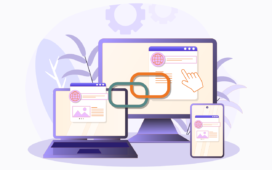The landscape of public administration is undergoing a profound transformation as technological advancements reshape how governments serve their citizens. Modern governance requires innovative approaches to address complex challenges while ensuring efficient service delivery and informed decision-making processes.
Key areas where technology enhances public administration
Data-driven policy development
Advanced analytics and machine learning algorithms enable policymakers to analyze vast data, identifying patterns and trends that inform more effective policy decisions. This systematic approach helps governments understand the real impact of their initiatives and adjust strategies based on concrete evidence rather than assumptions.
Enhanced citizen services and engagement
Digital platforms and automated systems streamline service delivery, making government services more accessible to the public and more responsive to their needs. Interactive portals and virtual assistants provide 24-hour support, reducing wait times and improving the citizen’s experience in accessing public services.
Resource optimization and allocation
Intelligent systems help government agencies optimize resources by predicting demand patterns and identifying areas requiring immediate attention. This proactive approach ensures better distribution of public resources and more efficient budget utilization across different departments and projects.
Predictive analytics for better planning
Advanced analytical tools enable public sector organizations to forecast future trends and potential challenges, allowing for better preparedness and more strategic long-term planning. Integrating AI public sector solutions has revolutionized how governments approach infrastructure development, emergency response, and public health management.
Streamlined administrative processes
Automation of routine tasks and paperwork reduces administrative burden, allowing public servants to focus on more complex and strategic activities. This transformation leads to faster processing times and reduced operational costs while maintaining high accuracy levels.
Improved public safety and security
Implementing AI public sector technologies has significantly enhanced the capability of law enforcement and emergency services. Predictive analytics help identify potential security risks while optimizing response times and resource deployment during emergencies.
Benefits of technological integration in governance
Increased operational efficiency
- Reduced processing times for public services
- Lower administrative costs
- Better resource utilization
- Improved interdepartmental coordination
Better citizen engagement
- Improved service accessibility
- Increased transparency
- Enhanced communication channels
- Personalized service delivery
Implementation considerations and best practices
Strategic planning and assessment
Before implementing new technologies, governments must thoroughly assess their current systems and future needs. This evaluation helps identify priority areas and ensures that technological solutions align with organizational goals and capabilities.
Change management and training
Successful implementation requires comprehensive training programs and change management strategies to help public sector employees adapt to new systems and processes. This includes developing new skills and understanding how to leverage technology effectively in their daily work.
Data security and privacy protection
Robust security measures must be implemented to protect sensitive government and citizen data. This includes regular security audits, encryption protocols, and strict access controls to maintain public trust and compliance with privacy regulations.
Infrastructure development
Adequate technological infrastructure must be in place to support new systems and ensure seamless integration with existing processes. This may require significant investment in hardware, software, and networking capabilities.
Transforming public sector operations through technology represents a significant opportunity to improve governance and service delivery. Success requires a balanced approach considering technological capabilities and human factors, ensuring that innovations genuinely serve the public interest while maintaining security and accessibility for all citizens.








